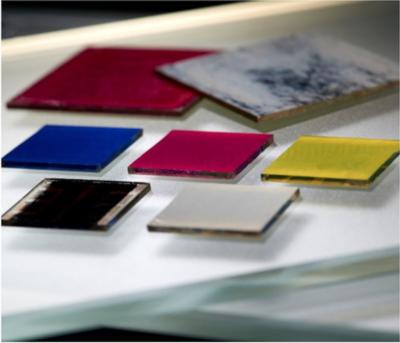Scientists at the Karlsruhe Institute of Technology (KIT) and SUNOVATION Produktion have investigated the loss of efficiency caused by coloring the glass substrate, as part of their research on perovskite cells printed on glass.
 PSCs and modules colored with inkjet-printed pigments in various bright colors and color patterns. Image from RRL Solar
PSCs and modules colored with inkjet-printed pigments in various bright colors and color patterns. Image from RRL Solar
The color was applied by inkjet printing, with first a white layer and then another color layer being deposited on top. The method is not new and has been used for years (by module manufacturer Sunovation Produktion GmbH of Elsenfeld, Germany, that was part of this research, and also by others) for colored modules with silicon cells. However, silicon cells absorb light in a different wavelength range than perovskite cells, which is why the same color application results in different final efficiencies.
The team reported not only excellent control of color impression, brightness, and pattern, but also angle invariant color perception, which makes the presented approach stand out among the many published colorization strategies for perovskite solar cells (PSCs).
According to project manager Helge Eggers of KIT, the company was satisfied with the results: Compared to uncolored reference solar cells, bright magenta and yellow PSCs displayed a remarkable relative power conversion efficiency (PCE) of up to 65% and more than 11% absolute PCE. Moreover, PSCs with more BIPV-relevant coloring patterns such as a mimic of a marble or corten steel surfaces were demonstrated. The colorization method presented is inexpensive and ready for scalable solar module production. To demonstrate the scalability of the proposed concept, a small-area perovskite solar module (4'cm2 aperture area) in white marble optics exhibiting a PCE of almost 14% as a potential application was presented.
However, it could be some time before colored perovskite modules are available on the market. This is not so much due to the inkjet printing method, which has already been tested and proven in practice, but to the challenges of printing perovskite cells on substrates in a large format.

